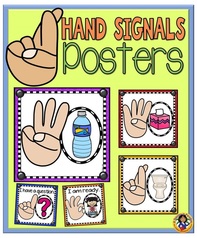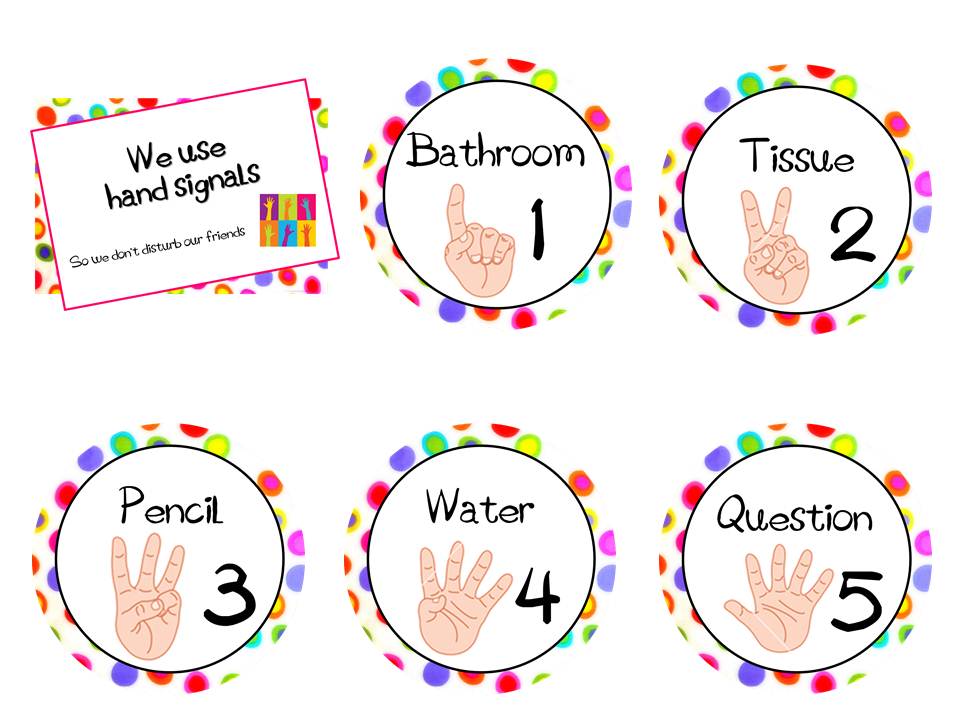|
This video gives examples of games and strategies to use in the classroom. Hand signal is lightly touched upon, but it has great resources to use such as a hand signal. The strategies explained can be used for student comprehension.
|
Definition"The help-signal is a flexible procedure that the student can use to get teacher assistance during independent seatwork. It allows the student to signal the teacher unobtrusively for help while continuing to work productively on alternative assignments." (InterventionCentral, 2015). If students aren't understanding something or have a question, they just need to show the hand signal and the teacher can assist them. One of the important parts of the hand signal is that it is a silent signal for students to show their distress to the teacher. Without disrupting the class or the learning of other students who have full understanding, the student can signal and then explain what they have questions about.
|
Content AreasReading: When a student is having a problem with comprehension, vocabulary, or sentence structure, the students can use the hand signal to show the teacher that they need help and clarification.
Math: If a student has a question about vocabulary, a math problem, or a formula, the student can show the hand signal to receive help. There can be a rule in the class that other students can help each other in math as well. For example, if Student A has a question and uses the hand signal, Student B can assist Student A if possible. Science: Science has complicated vocabulary that students may need clarification on. By using the hand signal, teachers will know if many students or only a few are struggling with a concept. There can be another explanation for the whole group if need be. Social Studies: During social studies instruction, students may falter in understanding vocabulary or historical events. If a student is struggling with understanding historical events, they can show the hand signal and someone can help them. Through many explanations from different students and the teacher, many students will be able to relate to at least one explanation. Steps to Implement"Step 1: Select a Student Signal. Decide on a way that the student can signal that they require teacher help. One approach is to prepare a 'help-flag' (a strip of colored, laminated posterboard) with the word 'Help' or similar word written on it. Attach a Velcro tab to the flag and affix a corresponding adhesive Velcro strip to the student's desk.
Step 2: Create an Alternative Work Folder. Create a student work folder and fill it with alternate assignments or worksheets that the student can work on independently. For example, you might insert into the folder math worksheets, a writing assignment, or lists of reading vocabulary words to be practiced. Step 3: Introduce the Program to the Student. Set aside time to meet with the student to introduce the help-signal routine.
Step 4: Begin the Intervention. Start the help-signal as soon as you feel that the student understands and will comply with the system. Take care to scan the room periodically when you are free during student independent seatwork to see if any students might need your assistance." (InterventionCentral, 2015). References |
Tips
Why use hand signals?"The time that students spend in the classroom actually working on academic subjects is sometimes referred to as 'engaged time.' During independent seatwork, difficult-to-teach students may not have effective strategies to ask for teacher help. Instead, when these students encounter a problem or work example that they cannot complete on their own, they may start to act out, distract peers seated around them, interrupt the teacher (who may be working with another group of students), or simply sit passively doing nothing." (InterventionalCentral, 2015).
|
Echevarría, J., Vogt, M., & Short, D. (2014). Making content comprehensible for elementary English learners: The SIOP model (2nd ed.). Boston, Massachusetts: Allyn & Bacon.
Games for Students to Help Build Comprehension : Teaching With Games. (2012, August 30). Retrieved October 21, 2015, from https://www.youtube.com/watch?v=qDSwvFL3mdQ
Help Signal. (n.d.). Retrieved October 21, 2015, from http://www.interventioncentral.org/academic-interventions/general-academic/help-signal
The Learner and Learning. (n.d.). Retrieved October 21, 2015.
Wright, W. E. (2010). Foundations for teaching English language learners: Research, theory, policy, and practice. Philadelphia: Caslon Pub.
Games for Students to Help Build Comprehension : Teaching With Games. (2012, August 30). Retrieved October 21, 2015, from https://www.youtube.com/watch?v=qDSwvFL3mdQ
Help Signal. (n.d.). Retrieved October 21, 2015, from http://www.interventioncentral.org/academic-interventions/general-academic/help-signal
The Learner and Learning. (n.d.). Retrieved October 21, 2015.
Wright, W. E. (2010). Foundations for teaching English language learners: Research, theory, policy, and practice. Philadelphia: Caslon Pub.


